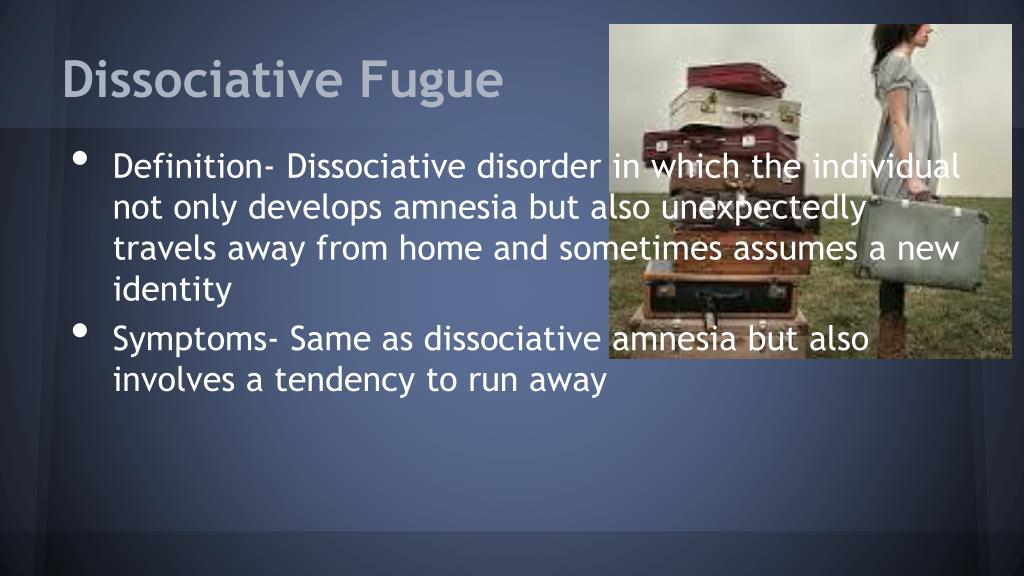

When the patient is sufficiently stabilized, treatment may progress to the second phase where traumatic memories are confronted and processed. Skills training is recommended as an essential part of this treatment-phase, to facilitate the patients’ ability to increase safety, regulate emotions, tolerate distress, and improve interpersonal functioning. The first stabilization phase is focused on establishing safety, increasing control over symptoms, and improving psychosocial functioning. Practice-based guidelines developed by the International Society for the Study of Trauma and Dissociation (ISSTD) recommend a phased-based approach, with three stages. Īt present, no evidence-based guidelines for the treatment of DID exist and very few clinical studies on this patient group have been published. Studies indicate that the prevalence of DID in psychiatric populations might be as high as 5%. Patients with CDD suffer from severe psychiatric symptoms, high levels of comorbidity with other disorders, low level of psychosocial functioning, and frequent suicidality and self-destructive behavior. CDDs are among the most costly psychiatric conditions, both in terms of societal resources and individual suffering.
Dissociative amnesia treatment full#
DID and the closely related Other Specified Dissociative Disorders, example 1 (OSDD), where similar disturbances are observed without meeting the full clinical picture of DID, are commonly categorized as Complex Dissociative Disorders (CDD). Patients report dissociative amnesia, involving a lack of recall of autobiographical material both in daily-life and for traumatic events. DID is characterized by having different dissociative identities, often referred to as parts or selves, with reported disruptions in memories, sense of self, and agency.

Dissociative amnesia treatment manual#
Trial registrationĭissociative Identity Disorder (DID) is the most severe of the dissociative disorders described in the fifth edition of the Diagnostic and Statistical Manual of Mental Disorders. Treatment was shown to be associated with improvements in psychological functioning. In the first randomized controlled trial for the treatment of complex dissociative disorders, stabilizing group treatment did not produce immediate superior outcomes. Within-group effects were non-significant in both conditions from baseline to end of treatment, but significant improvements in psychosocial function, PTSD symptoms, and general psychopathology were observed over a 6-months follow-up period. Similar results were observed for secondary outcomes. Mixed effect models showed no condition x time interaction during the delayed treatment period, indicating no immediate differences between conditions in the primary outcome. The primary outcome was Global Assessment of Functioning (GAF), while secondary outcomes were PTSD and dissociative symptoms, general psychopathology, and interpersonal difficulties. The treatment was based on the manual Coping with Trauma-Related Dissociation.

Methodsįifty nine patients with CDD were randomized to 20 sessions of stabilizing group–treatment, conjoint with individual therapy, or individual therapy alone, in a delayed-treatment design. The current study evaluates a structured protocolled group treatment delivered in a naturalistic clinical setting to patients with CDD, as an add-on to individual treatment. Although a few naturalistic studies indicate that these patients can benefit from psychotherapy, no randomized controlled trials have been reported with this patient-group. Patients with complex dissociative disorders (CDD) report high levels of childhood- abuse experiences, clinical comorbidity, functional impairment, and treatment utilization.


 0 kommentar(er)
0 kommentar(er)
